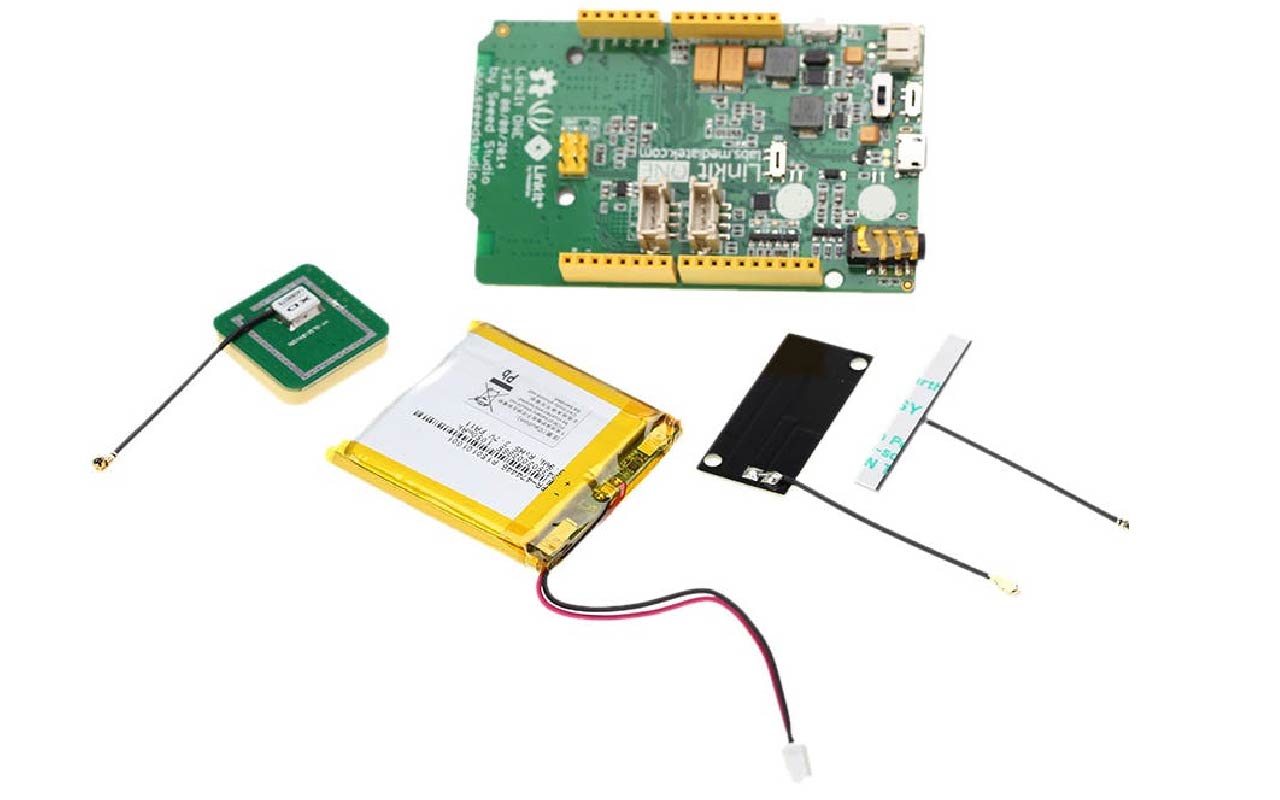Wi-Fi vs. Cellular: Find the Best Solution for Your IoT Project
Deciding which connectivity option to use is an extremely important decision when developing a new IoT project, which prompts the question: Should I use Wi-Fi or cellular connectivity?

Deciding which connectivity option to use is an extremely important decision when developing a new IoT project, which prompts the question: Should I use Wi-Fi or cellular connectivity?
Answering it is not easy considering that there are multiple answers based on the unique requirements of every IoT application. Everything depends on the characteristics of your project, its needs and, of course, the environment where the devices are located.
In this article we'll look at the Wi-Fi vs. cellular question to give you the pros and cons of each one and explain how you can choose the right option for your project.
A device that connects to a cellular network relies on its SIM card, because the link uses a wireless cellular connection, instead of passing through a router as Wi-Fi does. Sending data through a SIM card or a router involves significant differences in security, coverage, and cost; among others.
Let's take a look at the main benefits and limitations of each of them.
Cellular for IoT
The two most popular cellular IoT technologies are LTE-M and NB-IoT.
LTE-M (also known as Cat M1 or Cat M2, depending on the specification of the LTE-M standard) is the most widely used method. Several IoT service providers choose it due to its affordable cost, simplicity of implementation, and low power demand. There is also NB-IoT (Narrowband Internet of Things), which was designed specifically for IoT deployments. It operates on 4G networks (but not on the LTE bands) which makes it widely available around the globe.
Both options are valid, but one will always be better, depending on the project characteristics. For example, LTE-M supports VoLTE technology, making it very useful for mobility and voice, and NB-IoT is best for low data rates for use cases that don't require high refresh rates.
» LEARN ABOUT: Top 6 Affordable Cellular IoT Hardware Devices
Pros and Cons of Cellular for IoT
Pros:
- High network reliability: Cellular IoT devices can send data at high data rates (10–100 Gbps) regardless of the weather or the distance between the base station and the device (up until the longest distance that the device can be located). Consequently, cellular connectivity is growing in popularity for developing integrated machine-to-machine communications that enable wireless condition monitoring of industrial assets.
- Security: Contrary to what happens with Wi-Fi, data is always encrypted with cellular connectivity. Security is frequently an issue for Wi-Fi depending on network deployment.
- Versatility: Furthermore, it allows freedom of movement, making it easier to maintain connectivity even in challenging circumstances with mobile equipment.
Cons:
- Reception: One of the most criticized characteristics is poor indoor and underground reception. If your devices are constantly under these conditions, they may have an intermittent connection. The same can happen if your devices are located in a rural or undeveloped area, where there may not be good infrastructure to ensure that the network is always up-to-date and available.
- Recertification: Combining SIM cards from various carriers may require you to recertify your entire IoT deployment.
- Expenses: If your use case requires sending significant amounts of data, the high cost of data plans may become a problem.
Wi-Fi
Devices that use Wi-Fi need a router to connect to the internet, which forces the device to be located within the router's range. This usually means that both the router and the device have to be within the same room or building.
In a properly arranged set up, however, this should hardly be an issue considering that, in case of need, repeaters can be used to ensure that the connection in the required area is optimal.
For places like buildings with thick walls, remote areas, rural regions, underground locations, etc., that can’t be reached by the cellular signal or where there’s not even a cellular infrastructure developed, Wi-Fi can often be the only viable connectivity option.
How Wi-Fi performance has developed through the generations. Source: Quectel.
Pros and Cons of Wi-Fi for IoT
Pros:
- Transfer capacity: Wi-Fi is suitable for data-heavy transfers because there is no cost limitation on the amount of data transferred, contrary to what happens with cellular.
- Multiple devices connection: Wi-Fi is always a good option when connecting several devices as long as you have an excellent network capacity.
- Low latency: You don't have to share your network with other users, unlike cellular networks. In consequence, latency is usually shorter.
- Reliable wireless: Due to a less congested frequency band, higher sensitivity and link margin, it offers a reliable wireless link.
Cons:
- Fixed setup: Connection works pretty well as long as the connected device is within the boundaries of the Wi-Fi network. This severely restricts mobility.
- Security: Privacy and security can be a problem depending on your chosen option. Usually, communication is unencrypted by default in public networks. Make sure you use a secure authentication mechanism such as WPA2/WPA3.
- Network maintenance: Unlike cellular, where the network infrastructure is taken care of by the mobile operator, in the case of Wi-Fi at least a router with internet access is required. Maintaining and ensuring uptime for such infrastructure can be a challenge at scale.
IoT Wi-Fi vs Cellular: Comparison
*Even though the Wi-Fi standards have advanced to Wi-Fi 6 (802.11ax), most IoT chips support up to 802.11n, such as the ESP32. This is because most IoT applications do not require high bandwidth or high speeds.
**The source of these values is the research of Mehmet Erkan Yüksel and can be accessed here.
***These values can vary widely depending on factors such as the network operator and the protocols they employ, the quality of the signal, the settings of the device, and even the payload size.
When is Wi-Fi a better option?
- When you have access to the remote site in order to set up a Wi-Fi network.
- When paying for a monthly connectivity fee per device is not financially possible.
- When your project is located in an area where cellular data is limited.
- When you need to connect multiple devices within a confined space, such as a building — provided Wi-Fi coverage is possible.
When is Cellular a better option:
- When deployment conditions do not facilitate power connection.
- When paying a monthly connectivity fee per device is viable.
- When the deployment location is uncertain or you need to use location detection.
Why not use both?
Your answer might be different from choosing between Wi-Fi and cellular, a combination of connectivity options may be the right choice for your project. Even though not an IoT domain, the PC world has shown how end devices can benefit from dual connectivity by adding cellular modules to computers: “Cellular connectivity isn’t intended as a replacement for Wi-Fi but, for organizations that have large mobile workforces, it’s well understood that accessible Wi-Fi isn’t always available”, Joe O’Connor, VP PC OEM Sales, Quectel Wireless Solutions.
A Deloitte Study of Advanced Wireless Adoption further proves that it makes sense to use both technologies for some implementations: “Networking executives report their enterprises are adopting both technologies for their wireless initiatives, indicating they prefer Wi-Fi 6 for indoor, on-campus, and fixed network situations and 5G for outdoor, off-campus, and mobile network environments.”
In the same lines, an IoT product can benefit from having cellular connectivity, either as a backup, or as a backhaul for a Wi-Fi router.
If you want to learn more about implementing Wi-Fi and cellular for your IoT project you might want to download Quectel's white paper: Why Wi-Fi 6 goes hand-in-hand with cellular to enable the hyper-connected enterprise future.
Wi-Fi HaLow: A new standard to make Wi-Fi more suitable for IoT
An exciting and still new standard that is tailor-made for IoT is the 802.11ah or Wi-Fi HaLow, an open standard wireless network technology operating in the 850-950 MHz range. Signals can travel much longer and go through walls and obstacles not penetrable at higher frequencies.
Beyond Wi-Fi HaLow, there is Wi-Fi 6, 802.11ax, created primarily to satisfy the needs of dense public and industrial deployments. It also stands out for its faster response to and from connected units. Orthogonal frequency-division multiple access (OFDMA), target wake time (TWT), and multi-user, multiple input, multiple output (MU MIMO) are among the technologies included in Wi-Fi 6 that are designed to improve efficiency, enhance throughput, and/or decrease power consumption.
Even though Wi-Fi seems out of place in IoT when compared to other options that deliver better range and less power demand, the truth is that, even without counting new standards like the HaLow, Wi-Fi can be extremely useful in IoT deployments on its own or when used in tandem with other technologies.
Cellular, for its part, has been one of the main characters in the development of IoT and, as such, must be always considered as an option for a new application thanks to its ubiquity. Ultimately, though, deciding on one of these options will come down to the device location and movability, the number of devices, and economic compatibility of the technology and your project.
Frequently Asked Questions
What Are the Advantages of Wi-Fi for IoT?
- Great for contexts where devices are mostly stationary or remain within a certain area.
- Higher bandwidth and lower latency.
- Ideal for places like buildings with thick walls, remote areas, rural regions, underground locations, etc.
What Are the Advantages of Cellular for IoT?
- The ubiquity of its infrastructure makes it an almost-always available option.
- Very energy efficient.
- Its SIM-based authentication and automatic encryption make it a very safe option.
Wi-Fi or Cellular, What Should I Use?
Even though the above advantages can provide a general idea on what the best option can be, the actual answer will vary from application to application, and for that reason every pro and con should be weighed thoughtfully. Something worth remembering, however, is that these technologies can be used together to complement themselves.

